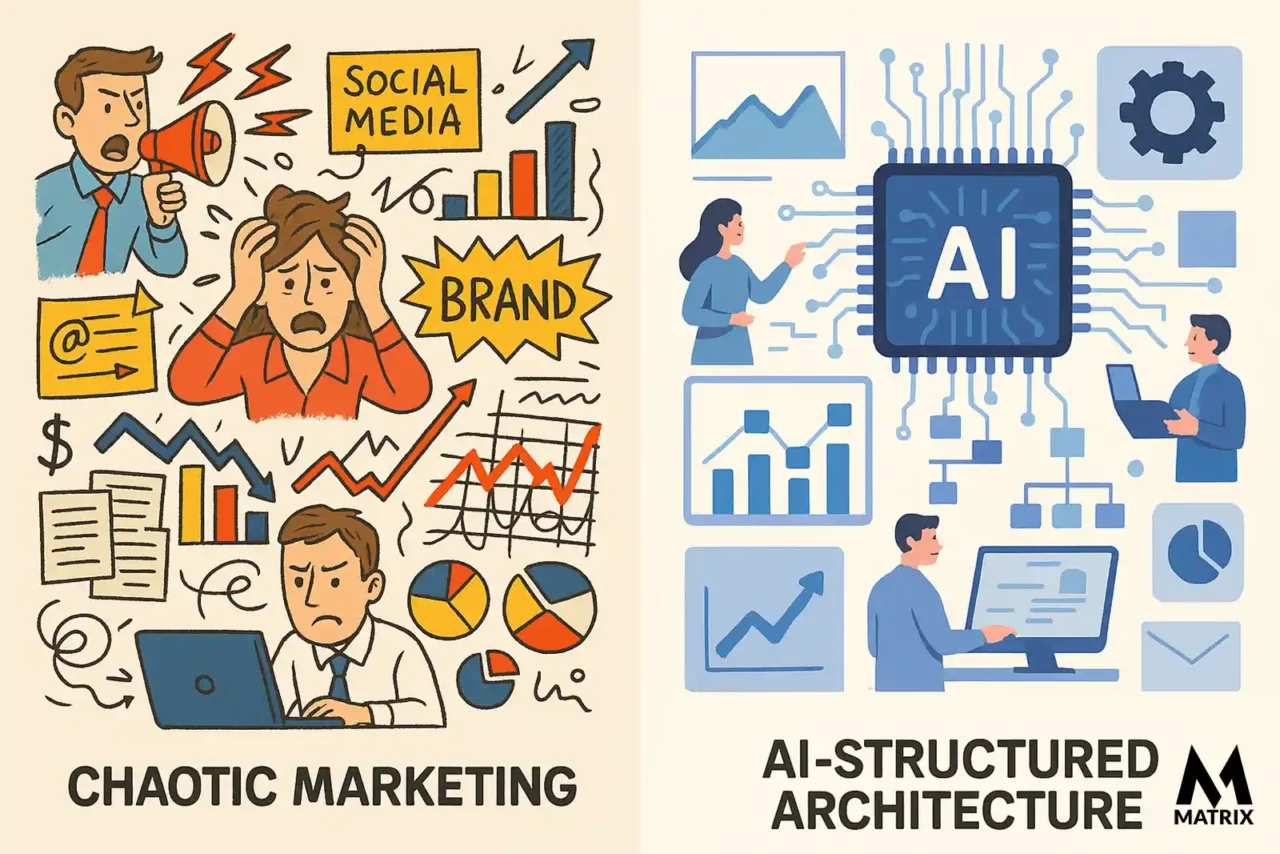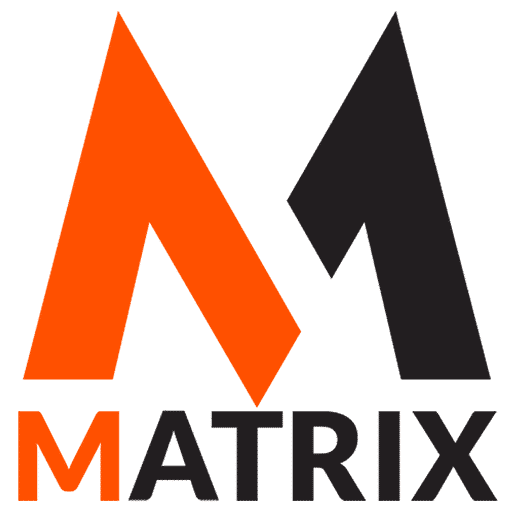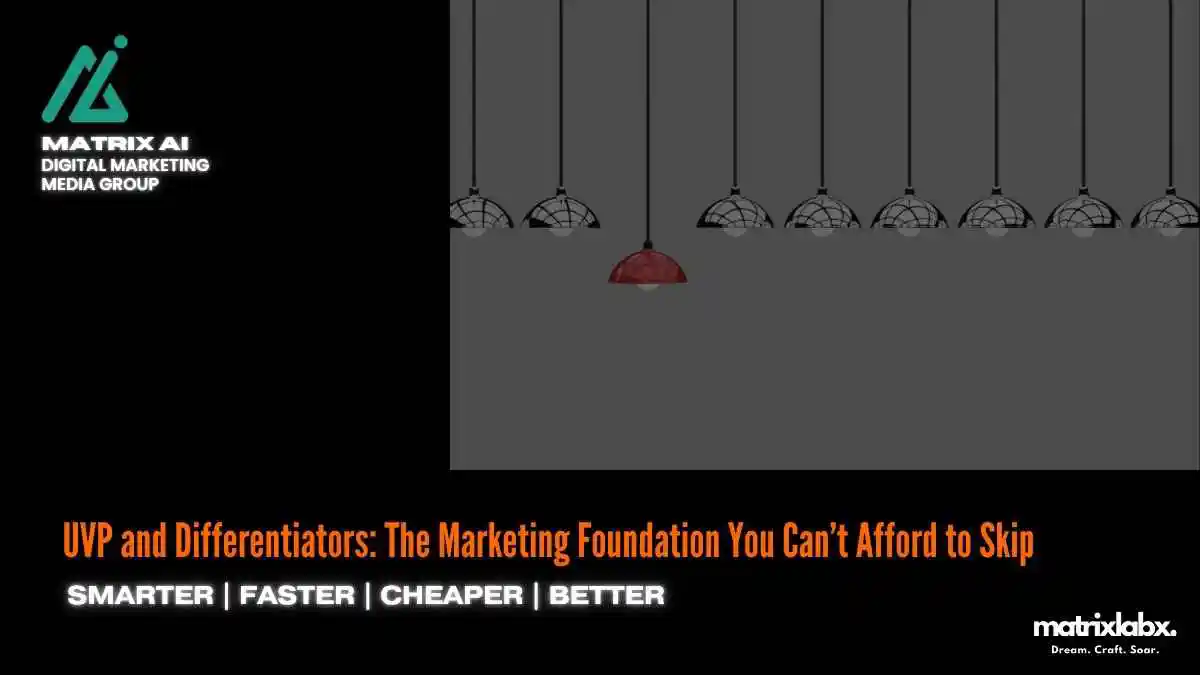UVP and Differentiators: The Marketing Foundation You Can’t Afford to Skip
Learn How UVP and Differentiators: The Marketing Foundation You Can’t Afford to Skip
In an increasingly crowded marketplace, clarity is your most powerful marketing asset. Yet too often, brands leap into campaigns without a well-defined Unique Value Proposition (UVP) or clear differentiators—foundational elements determining whether your message resonates or gets lost in the noise.
For marketing managers tasked with driving growth, overlooking this strategic groundwork isn’t just a missed opportunity—it’s a costly mistake. The difference between blending in and breaking through is understanding and articulating what truly sets your brand apart.
This guide will explore crafting a UVP and defining key differentiators that align your team, sharpen your competitive edge, and accelerate ROI.
The Hidden Cost of Poor Sales Conversions
Low sales conversion rates are more than missed opportunities—they’re silent profit killers. According to recent industry data, the average website conversion rate across all industries hovers around 2.35%.
Yet, the top 25% of companies are converting at 5.31% or higher. This gap underscores a critical truth: businesses that fail to optimize their sales funnel leave significant revenue on the table.
Even more striking, a study by Forrester Research found that companies lose up to 30% of potential revenue due to inefficiencies in their sales processes.
These inefficiencies often stem from poorly aligned messaging, lack of personalization, and inadequate follow-up strategies. 79% of marketing leads never convert into sales, largely due to a lack of nurturing.
The impact is even more pronounced in digital environments. Google reports that 53% of mobile users abandon sites that take longer than three seconds to load—yet the average mobile landing page takes 15 seconds. This delay directly contributes to lost conversions, particularly for businesses relying on online traffic to drive growth.
Moreover, 80% of consumers say a company’s experience is as important as its products or services. Businesses that fail to deliver a seamless, personalized journey risk losing customers to competitors who do.
This is especially relevant when 74% of companies report that converting leads into customers is their top priority, yet only 22% are satisfied with their conversion rates.
The message is clear: improving sales conversions isn’t just about tweaking a call-to-action or changing button colors. It requires a strategic overhaul prioritizing user experience, data-driven decision-making, and continuous optimization. Businesses that invest in these areas are not only more competitive—they’re more profitable.
Matrix Marketing ROI Calculator
Poor Sales Conversions? Strengthen Your UVP and Differentiators First
The Marketing Foundation You Can’t Afford to Skip
Why Your Unique Value Proposition (UVP) Matters
If your sales conversions are underperforming, the root cause often lies in a weak or unclear Unique Value Proposition (UVP). Your UVP is the cornerstone of your marketing strategy—it defines what makes your brand different, valuable, and worth choosing over competitors. Without a strong UVP, your messaging lacks clarity, and your audience lacks a compelling reason to act.
Key Differentiators: What Sets You Apart
Differentiators are the tangible and intangible qualities that distinguish your brand in the marketplace. Whether it’s superior technology, exceptional service, or a niche focus, these elements must be communicated across all marketing channels. They attract the right customers and build trust and loyalty over time.
Why You Might Need Expert Help
Defining and articulating your UVP and differentiators isn’t always straightforward. It requires strategic insight, market research, and a deep audience understanding. Matrix Marketing Group specializes in helping brands uncover and amplify what makes them unique. With proven frameworks and data-driven strategies, we ensure your marketing foundation is solid so your conversions can soar.
Position Your Brand to Win
Learn how Matrix Marketing Group can help you refine your UVP, highlight your differentiators, and drive meaningful results. Don’t let poor conversions hold your business back. Start with a foundation built for growth.
UVP and Differentiators: The Marketing Foundation You Can’t Afford to Skip

What Success Looks Like
A strong Unique Value Proposition (UVP) and clearly defined differentiators are the cornerstones of effective marketing. Success in this area means:
- Prospects immediately understand what your brand offers and why it matters.
- Messaging is consistent across all channels, reinforcing brand trust.
- Sales and marketing teams align with a unified narrative.
- Your brand stands out in a crowded market, making customer decisions easier.
With a compelling UVP and well-articulated differentiators, your brand becomes more than just an option—it becomes the obvious choice.
Setting Realistic Expectations
Building a UVP is not a one-hour brainstorm. It’s a strategic process that requires:
- Deep customer insight: Understanding what truly matters to your audience.
- Competitive awareness: Knowing how you compare and where you lead.
- Internal alignment: Gaining buy-in from stakeholders across the organization.
Expect iterations. Your first draft may not resonate, and that’s okay. Testing, feedback, and refinement are part of the process. The goal is clarity, not perfection on the first try.
Common Mistakes to Avoid
Mistake 1 – Confusing Features with Value
Listing product features is not a UVP. Customers care about outcomes, not specs. Focus on the benefits and the transformation your product or service delivers.
Mistake 2 – Trying to Be Everything to Everyone
Broad messaging dilutes impact. A strong UVP speaks directly to your ideal customer. If your message tries to resonate with everyone, it resonates with no one.
Mistake 3 – Overlooking Internal Alignment
If your team can’t clearly articulate your UVP, your customers won’t either. Ensure everyone—from marketing to sales to support—knows and uses the same language.
Mistake 4 – Neglecting the Competition
Your UVP should highlight what you do better or differently. Ignoring competitors leads to vague messaging. Clarity comes from contrast.
A well-crafted UVP and defined differentiators are not just marketing assets—they are business essentials. They shape your strategy, guide your messaging, and drive conversion. Get this foundation right, and everything else becomes easier.
Unique Value Proposition Generator
UVP and Differentiators: The Marketing Foundation You Can’t Afford to Skip
Your Unique Value Proposition (UVP) and key differentiators are not just marketing buzzwords—they are the cornerstone of your brand’s identity and the reason customers choose you over the competition.
Establishing a clear UVP and defining what sets you apart is the first step in building a brand that resonates, converts, and grows.
Step 1: Define Your Target Audience
Understanding who you’re speaking to is the foundation of an effective UVP. Without a clearly defined audience, your messaging will be vague and unfocused.
Why It Matters
Your UVP must be tailored to your ideal customer’s needs, pain points, and desires. When you know who they are, you can speak directly to what matters most to them.
Tips for Success
- Create detailed buyer personas, including demographics, motivations, challenges, and behaviors.
- Use customer interviews, surveys, and analytics to gather real-world insights.
- Focus on high-value segments that align with your business goals.
Pro Tip: Use empathy mapping to visualize your audience’s mindset and uncover emotional drivers behind their decisions.
Step 2: Identify Core Benefits of Your Product or Service
List your product or service’s tangible and emotional benefits, not just the features.
Detailed Guidance
- Start by listing all features of your offering.
- Translate each feature to provide a direct benefit to the customer.
- Prioritize benefits that align with your audience’s top concerns.
Common Pitfalls
- Mistaking features for benefits. (e.g., “24/7 support” is a feature; “peace of mind knowing help is always available” is a benefit.)
- Overloading the list. Keep it focused on what matters most to your audience.
| Feature | Benefit |
| AI-powered analytics | Make smarter decisions faster |
| Custom onboarding | Get up and running with zero frustration |
| Cloud-based access | Work from anywhere, anytime |
Step 3: Pinpoint What Makes You Different
Now that you know what you offer and to whom, it’s time to clarify how you’re different from everyone else in the market.
Supporting Details
- Conduct a competitive analysis to understand how others position themselves.
- Identify gaps in the market or areas where you outperform.
- Highlight pricing, innovation, customer service, speed, or specialization.
Substeps
- Create a comparison chart of your brand vs. top competitors.
- Interview current customers to learn why they chose you.
Example: “While other platforms offer generic templates, we deliver industry-specific solutions tailored to your workflow—no customization required.”
Step 4: Craft a Clear, Compelling UVP Statement
Bring together your audience, benefits, and differentiators into a concise, customer-focused statement.
Formula
We help [target audience] achieve [desired outcome] through [unique approach or differentiator].
Examples
- “We help busy professionals save 10+ hours a week with automated task management—no learning curve required.”
- “We deliver eco-friendly packaging that reduces waste and enhances brand perception—without increasing costs.”
Tips for Success
- Keep it under 2 sentences.
- Avoid jargon; speak in the language of your customer.
- Make it benefit-driven, not product-focused.
Step 5: Integrate Your UVP Across All Channels
Your UVP is only powerful if it’s visible. Consistently apply it across your website, social media, email marketing, sales pitches, and product messaging.
How to Do It
- Feature your UVP prominently on your homepage and About page.
- Align sales scripts and customer service messaging with your UVP.
- Ensure ad copy and landing pages reflect your core differentiators.
Step 6: Test, Validate, and Refine
Markets evolve—and so should your messaging. Continuously test your UVP and differentiators to ensure they resonate and convert.
Best Practices
- A/B test different versions of your UVP on landing pages.
- Use feedback loops from sales teams and customer support to identify gaps.
- Monitor engagement metrics and conversion rates for messaging changes.
Troubleshooting
- Low conversion rates? Your UVP may be unclear or misaligned.
- High bounce rates? Your UVP may not be visible or compelling enough.
By following these steps, you’ll build a UVP and differentiator framework that drives clarity, consistency, and competitive advantage. This isn’t just a marketing exercise—it’s the strategic foundation for long-term growth.
Case Studies: Successful Deployment of UVP and Differentiators
1. BrightEdge Solutions – Defining a Clear Market Position
BrightEdge, a mid-sized SEO platform provider, faced stiff competition in a saturated digital marketing landscape.
By revisiting their Unique Value Proposition (UVP), they honed in on their AI-powered insights as the core differentiator.
Through targeted messaging and consistent brand positioning, BrightEdge repositioned itself as the go-to solution for enterprise-level SEO automation.
Results:
- 38% increase in qualified leads within six months
- 22% improvement in customer retention
- Elevated brand recognition in key industry publications
2. MedTech Innovations – Standing Out in a Regulated Industry
MedTech Innovations, a healthcare software company, struggled to distinguish itself in a highly regulated and competitive field.
After a strategic workshop on identifying UVPs, the company emphasized its HIPAA-compliant cloud infrastructure and 24/7 clinical support as key differentiators.
This messaging was integrated across digital channels and sales collateral.
Results:
- 45% growth in inbound demo requests
- 30% faster sales cycle due to clearer value articulation
- New partnerships formed with three major hospital networks
3. Nexa Logistics – Turning Operational Excellence into a Market Advantage
Nexa Logistics, a regional supply chain provider, had a strong service record but lacked a compelling narrative to support growth.
Using customer interviews and competitive analysis, Nexa refined its UVP around “Real-Time Visibility and Guaranteed Delivery Windows.”
The company built a marketing campaign around this promise, supported by client testimonials and case data.
Results:
- 50% increase in website engagement
- 60% rise in RFP invitations from enterprise clients
- Shortlisted for a national logistics innovation award
4. CoreVista Software – Leveraging Niche Expertise for Market Penetration
CoreVista, a B2B SaaS company serving the manufacturing sector, needed to differentiate itself from larger, more generalized platforms.
By focusing on its deep industry knowledge and customizable ERP integrations, CoreVista crafted a UVP that resonated with mid-market manufacturers. It launched a targeted content strategy that showcased its sector-specific solutions.
Results:
- 3x growth in organic traffic within four months
- 35% increase in conversion rates from paid campaigns
- Expanded into two new verticals through strategic messaging
These case studies highlight the transformative impact of a well-defined UVP and strategic differentiators.
For mid-sized companies aiming to scale, investing in this marketing foundation is not optional—it’s essential.
Conclusion: UVP and Differentiators — The Marketing Foundation You Can’t Afford to Skip
Crafting a clear Unique Value Proposition (UVP) and identifying strong differentiators is not just a marketing exercise—it’s the strategic foundation for building a brand that resonates, converts, and endures. In today’s competitive landscape, the brands that rise above the noise know exactly who they are, what they offer, and why it matters to their audience.
Throughout this guide, we’ve explored the essential steps to define your UVP and differentiators precisely and purposefully. We began by identifying your ideal customer and understanding their pain points, desires, and motivations.
From there, we examined your competitors to pinpoint gaps and opportunities that allow your brand to stand out.
We then moved into crafting a concise, compelling, and genuine value UVP, followed by articulating differentiators that support and reinforce your position in the market.
When executed correctly, a strong UVP and well-defined differentiators do more than attract attention—they build trust, drive engagement, and create loyalty.
They guide your messaging, shape your customer experience, and align your team around a unified brand vision. Whether launching a new product, refreshing your brand, or scaling your business, this foundation ensures consistency and clarity across every touchpoint.
Remember, this is not a one-time task. Markets evolve, customer expectations shift, and competitors adapt. That’s why it’s essential to revisit your UVP and differentiators regularly.
Test, refine, and align them with real-world feedback and performance data. The more you practice and apply these principles, the stronger your brand will become.
Now is the time to apply what you’ve learned. Use your UVP as a strategic filter for every marketing decision you make. Let your differentiators guide your storytelling, content, and customer interactions. The more consistently you communicate your unique value, the more clearly your audience will understand why you’re the right choice.
Your UVP and differentiators aren’t just marketing tools but the strategic compass for your brand’s growth. Don’t skip this step. Own it, refine it, and let it drive everything you do.
Our Amazing Clients.
For nearly two decades, we have forged partnerships with companies that aspire to minimize waste, gain a competitive edge, and truly prioritize the well-being of their stakeholders.







